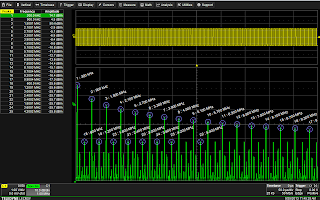 |
| Figure 1: An FFT of a 300-kHz square wave. |
You need to test, we're here to help.
You need to test, we're here to help.
25 September 2013
Back to Basics: What is an FFT?
19 September 2013
Back to Basics: Creating Pulsed Waveforms
 |
| Figure 1: The Pulse waveform dialog box. |
10 September 2013
Don't Just Trigger, But Trigger Smart
 |
| Figure 1: The runt pulse and non-monotonic edge anomalies in this signal are not apparent with a simple edge trigger. |
Subscribe to:
Posts (Atom)